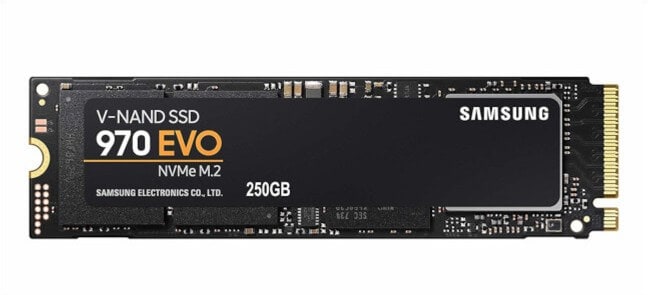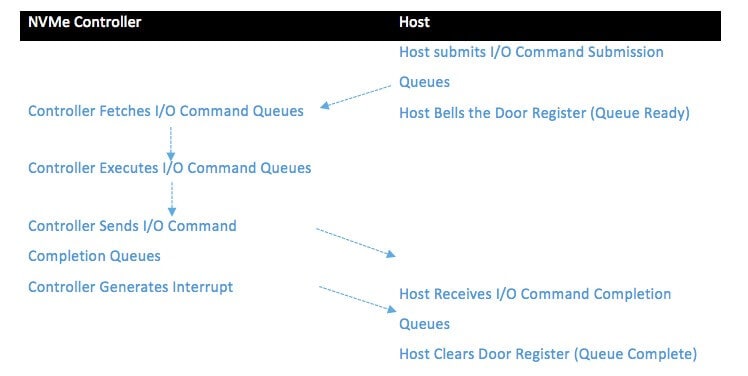What Is NVMe?
NVMe stands for Non-Volatile Memory Express, the new generation of Solid State Drive (SSD) with the fastest speed among all available types of storage devices in the market. In addition, the response time of NVMe in the working environment is incomparable.
Usually, the working procedure of NVMe Storage is the same as SSD. But what makes it different from SSD is that NVMe transfers data faster. As a result, NVMe drives execute the commanding and operational tasks speedily, contrary to the old ones. That is why NVMe devices are the first choice of every computer geek.

As it has the highest speed among the storage drives, NVMe is widely used in all walks of life. People use it for smooth and efficient work and extra space. The basic principle of an electronic machine is that the more the speed, the more room it has; therefore, it has a vital role in gaming, photography, video making, and heavy tasks.
NVMe History
The Non-Volatile Memory Express is a miracle of the 21st century, bringing a revolution in the field of computation. One decade ago, around 80 companies across the computer industry developed this technology under the patronage of the NVM Express group. The NVM Express officially released the first-ever version 1.0 on March 01, 2011. After that, the different versions were released after one another. Notably, the current version (1.4a) is available on the market.
It is pertinent to mention here that the NVMHCI working group, a group of 35 companies, launched the first version NVMe 1.0 in 2008. Later on, all above mentioned 80 companies joined hands and became a part of the working Group that further started working for the development of NVMe. Since then, a total of 14 versions have come into the market.
Interestingly, the motive behind the introduction of NVMe is to connect the software host and non-volatile memory through the PCI Express Bus to tackle the limitation of the SATA Hard Disk Drive. Laterally, it evolved and came up with new storage devices. Now, it is the choice of every computer user due to its matchless ability to do any task in a befitting manner.

Historical Development of NVMe
Since the first version of NVMe was released in 2008, there have been many updates. The detail has been prepared accordingly, coupled with the versions and release dates:
Sr. No. |
NVMe Version Name |
Release Date |
| 1. | 1.0 | 2008 |
| 2. | 1.0e | January 2013 |
| 3. | 1.1b | July 2014 |
| 4. | 1.2 | November 2014 |
| 5. | 1.2a | October 2015 |
| 6. | 1.2b | June 2016 |
| 7. | 1.2.1 | June 2016 |
| 8. | 1.3 | May 2017 |
| 9. | 1.3a | October 2017 |
| 10. | 1.3b | May 2018 |
| 11. | 1.3c | May 2018 |
| 12. | 1.3d | March 2019 |
| 13. | 1.4 | June 2019 |
| 14. | 1.4a | March 2020 |
The table, as mentioned earlier, gives you in-depth information regarding the evolution of NVMe along with the timeline. It is equally important to know that exceptional items take a considerable time, so it was the reason that NVMe took almost 15 years for its evolution.
How Does NVMe Work?
The working module of NVMe is relatively more straightforward than other types of hard disks. It connects with PCI Express Bus or M.2 or U.S that helps transfer the data from one place to another. It enables immediate sharing and rapid storage with minimal power supply. The working mechanism of NVMe in the lower head is as below:
- Step 1. The host will write the Input/Output Queue.
- Step 2. NVMe Controller will execute the task and forward the same to the host in the light of its instructions.
- Step 3. After that, the host will record the Input / Output queue and processes it as Completion Queue.

The most straightforward three-step formula provides a user-friendly experience for executing the assigned job.
Drawbacks And Benefits of NVMe
Apart from the speed, NVMe also owns other different benefits. However, it also has drawbacks that you may need to know before purchasing one NVMe for your device.
Pros
Matchless Speed
Superior Storage Capacity
Higher Bandwith
Cons
Highly Expensive
Demand Upgraded System
Compatibility issues
Drawback of NVMe
Highly Expensive
One of the prevailing drawbacks of NVMe is that it is costly. NVMe costs you more as compared to SSD and SATA HDD. As mentioned, this storage uses the latest and state-of-the-art technology, making it highly expensive among other storage devices.
Demand Upgraded System
NVMe demands an upgraded system. It is essential to know that an upgraded system means a system that fulfills all modern requirements. Surprisingly, this storage device works on the principle of modernity; the newer your system, the better it will perform.
Compatibility Issues
NVMe's high requirement for the computer's system sometimes causes compatibility issues with the existing Operating System (OS). So, it would be best if you got it checked by an expert before installation to avoid any inconvenience.
Benefits of NVMe
Matchless Speed
One of the prime benefits of the NVMe is its matchless speed. Usually, it processes the task 2.5 times faster than the Advanced Host Controller Interface (AHCI) and SATA drives. So you can process your data faster than SSD and other storage devices and save your precious time.
Superior Storage Capacity
The second benefit of having NVMe is that it has 25 times more storage capacity than Hard Disk Drive (HDD) and Solid State Drive (SSD). Therefore, you may have enough storage for processing for saving multimedia files, i.e., photos, videos, apps, documents, etc. The more the storage, the better it will perform. However, in case of data loss, it is crucial to know about NVMe data recovery options to retrieve your valuable information safely.
Higher Bandwith
Another benefit of NVMe is that it has higher bandwidth. The bandwidth of NVMe is more than the SATA and SSD drives. The higher bandwidth helps you execute the task swiftly and get results without technical issues.
What Is the Difference between NVMe And SSD?

The benefits and drawbacks of NVMe provide a clear-cut picture of the storage device; however, there is a need to draw a comparison between NVMe and SSD for a complete understanding of their differences:
Indicators |
NVMe(Non-Volatile Memory Express) |
SSD(Solid State Drive) |
| Date Accessing Methodology | NVMe uses an interface to access data. | SSD uses an integrated circuit to access the requisite data. |
| Security and Encryption | Advanced in encryption and security. | These are comparatively less advanced in encryption and security. |
| Prototocl vs. Device | NVMe mainly works as a protocol instead of a device. | SSD uses as a device and is usually used for the secondary one. |
| Speed | The read-write speed of NVMe is about 2000 MB per second, and sometimes it may go beyond the threshold. This one is 2.5 times faster than SSD. | The read-write speed of SSD is less than that of NVMe, and it has 600 MB per second. |
| Transferring Capacity | NVMe transfers data so fastly, 25 times more than the SSD, as it has tremendous speed. | SSD transfers data are relatively slow. |
| Compatibility | NVMe has compatibility issues. It does not fit with old and outdated systems. | SSD fits with every device due to universal compatibility. |
| Cost Ratio | NVMe is the most expensive device in the contemporary world. | SSD is comparatively cheaper than NVMe. |
| Power Consumption | NVMe needs a plethora of power for basic functioning and normal working. | SSD can run its function with relatively less power requirement. |
Conclusion
Considering all the benefits NVMe provides, it has become essential for data-driven businesses. However, if you need a hard drive for your personal device, it would be better to compare the drawbacks and benefits of NVMe with other drives before making a decision. We hope this guide has helped you understand what is NVMe, and what is NVMe storage.

 ChatGPT
ChatGPT
 Perplexity
Perplexity
 Google AI Mode
Google AI Mode
 Grok
Grok























